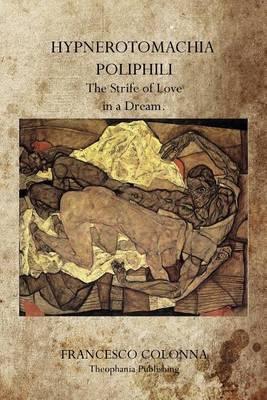Thank you for checking out this book by Theophania Publishing. We appreciate your business and look forward to serving you soon. We have thousands of titles available, and we invite you to search for us by name, contact us via our website, or download our most recent catalogues. Poliphilo's Strife of Love in a Dream, is a romance said to be by Francesco Colonna. First published in Venice, 1499, in an elegant page layout, with refined woodcut illustrations in an Early Renaissance style, Hypnerotomachia Poliphili presents a mysterious arcane allegory in which Poliphilo pursues his love Polia through a dreamlike landscape, and is at last reconciled with her by the Fountain of Venus. The text of the book is written in a bizarre Latinate Italian, full of words based on Latin and Greek roots without explanation. The book, however, also includes words from the Italian language, as well as illustrations including Arabic and Hebrew words; Colonna also invented new languages when the ones available to him were inaccurate. (It also contains some uses of Egyptian hieroglyphs, but they are not authentic, most being drawn from Horapollo's erroneous volume of symbolism.) Its story, which is set in 1467, consists of precious and elaborate descriptions of scenes involving the title character, Poliphilo ("Friend of Many Things", from Greek Polloi "Many" and Philos "Friend"), as he wanders a sort of bucolic-classical dreamland in search of his love Polia ("Many Things"). The author's style is elaborately descriptive and unsparing in its use of superlatives. The text makes frequent references to classical geography and mythology, mostly by way of comparison. The book has long been sought after as one of the most beautiful incunabula ever printed. The typography is famous for its quality and clarity, in a roman typeface cut by Francesco Griffo, a revised version of a type which Aldus had first used in 1496 for the De Aetna of Pietro Bembo. The book is illustrated with 168 exquisite woodcuts showing the scenery, architectural settings, and some of the characters Poliphilo encounters in his dreams.











